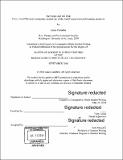| dc.contributor.advisor | Toby Lester. | en_US |
| dc.contributor.author | Castañón, Laura (Laura Anne) | en_US |
| dc.contributor.other | Massachusetts Institute of Technology. Graduate Program in Science Writing. | en_US |
| dc.coverage.spatial | n-mx--- | en_US |
| dc.date.accessioned | 2019-01-11T16:06:43Z | |
| dc.date.available | 2019-01-11T16:06:43Z | |
| dc.date.copyright | 2018 | en_US |
| dc.date.issued | 2018 | en_US |
| dc.identifier.uri | http://hdl.handle.net/1721.1/119975 | |
| dc.description | Thesis: S.M. in Science Writing, Massachusetts Institute of Technology, Department of Comparative Media Studies/Writing, 2018. | en_US |
| dc.description | Cataloged from PDF version of thesis. | en_US |
| dc.description | Includes bibliographical references (pages 21-26). | en_US |
| dc.description.abstract | Cabo Pulmo National Park is a 27-square mile protected area in the Gulf of California, near the southern end of Mexico's Baja Peninsula. The park surrounds one of the oldest coral reefs on the western coast of North America. Once damaged and depleted by overfishing, the reef has seen an incredible recovery since its protection in 1995. This recovery is due in large part to the efforts of the very people who once fished the reef. The adjacent community of Cabo Pulmo, in collaboration with a group of scientists from the Universidad Autónoma de Baja California Sur in La Paz, Mexico, requested the marine protected area, acted as vigilante enforcers for the park's rules, and worked to prevent proposed developments that might damage the ecosystem. As the ecosystem has recovered, they have been able to reap the economic benefits of the park, opening dive shops and restaurants. The story of their struggles and triumphs can provide valuable lessons for community-based conservation efforts around the world. | en_US |
| dc.description.statementofresponsibility | Laura Castañón. | en_US |
| dc.format.extent | 26 pages | en_US |
| dc.language.iso | eng | en_US |
| dc.publisher | Massachusetts Institute of Technology | en_US |
| dc.rights | MIT theses are protected by copyright. They may be viewed, downloaded, or printed from this source but further reproduction or distribution in any format is prohibited without written permission. | en_US |
| dc.rights.uri | http://dspace.mit.edu/handle/1721.1/7582 | en_US |
| dc.subject | Comparative Media Studies. | en_US |
| dc.subject | Graduate Program in Science Writing. | en_US |
| dc.title | The people and the park : how a small Mexican community created one of the world's most successful marine preserves | en_US |
| dc.title.alternative | How a small Mexican community created one of the world's most successful marine preserves | en_US |
| dc.type | Thesis | en_US |
| dc.description.degree | S.M. in Science Writing | en_US |
| dc.contributor.department | Massachusetts Institute of Technology. Graduate Program in Science Writing | en_US |
| dc.identifier.oclc | 1080639686 | en_US |
